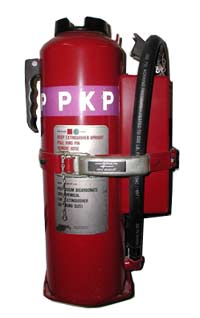
Back بيكربونات البوتاسيوم Arabic بیکربونات پوتاسیوم AZB Hydrogenuhličitan draselný Czech Kaliumhydrogencarbonat German Kalia bikarbonato Esperanto Bicarbonato de potasio Spanish پتاسیم بیکربنات Persian Kaliumvetykarbonaatti Finnish Bicarbonate de potassium French पोटासियम बाइकार्बोनेट Hindi

| |
| Names | |
|---|---|
| IUPAC name
potassium hydrogencarbonate
| |
| Other names
potassium hydrogencarbonate, potassium acid carbonate
| |
| Identifiers | |
3D model (JSmol)
|
|
| 4535309 | |
| ChEBI | |
| ChEMBL | |
| ChemSpider | |
| DrugBank | |
| ECHA InfoCard | 100.005.509 |
| EC Number |
|
| E number | E501(ii) (acidity regulators, ...) |
| KEGG | |
PubChem CID
|
|
| UNII | |
CompTox Dashboard (EPA)
|
|
| |
| |
| Properties | |
| KHCO3 | |
| Molar mass | 100.115 g/mol |
| Appearance | white crystals |
| Odor | odorless |
| Density | 2.17 g/cm3 |
| Melting point | 292 °C (558 °F; 565 K) (decomposes) |
| 22.4 g/100 mL (20 °C)[1] | |
| Solubility | practically insoluble in alcohol |
| Acidity (pKa) | 10.329[2]
6.351 (carbonic acid)[2] |
| Thermochemistry | |
Std enthalpy of
formation (ΔfH⦵298) |
-963.2 kJ/mol |
| Pharmacology | |
| A12BA04 (WHO) | |
| Hazards[3] | |
| GHS labelling: | |

| |
| Warning | |
| H315, H319, H335 | |
| P261, P264, P280, P302+P352, P304+P340, P305+P351+P338, P312, P332+P313, P362, P403+P233, P405 | |
| NFPA 704 (fire diamond) | |
| Flash point | Non-Flammable |
| Lethal dose or concentration (LD, LC): | |
LD50 (median dose)
|
> 2000 mg/kg (rat, oral) |
| Safety data sheet (SDS) | MSDS |
| Related compounds | |
Other anions
|
Potassium carbonate |
Other cations
|
Sodium bicarbonate Ammonium bicarbonate |
Related compounds
|
Potassium bisulfate Monopotassium phosphate Dipotassium phosphate |
Except where otherwise noted, data are given for materials in their standard state (at 25 °C [77 °F], 100 kPa).
| |
Potassium bicarbonate (IUPAC name: potassium hydrogencarbonate, also known as potassium acid carbonate) is the inorganic compound with the chemical formula KHCO3. It is a white solid.[1]

- ^ a b H. Schultz; G. Bauer; E. Schachl; F. Hagedorn; P. Schmittinger (2005). "Potassium Compounds". Ullmann's Encyclopedia of Industrial Chemistry. Weinheim: Wiley-VCH. doi:10.1002/14356007.a22_039. ISBN 3-527-30673-0.
- ^ a b Goldberg, Robert N.; Kishore, Nand; Lennen, Rebecca M. (2003). "Thermodynamic quantities for the ionization reactions of buffers in water". In David R. Lide (ed.). CRC handbook of chemistry and physics (84th ed.). Boca Raton, FL: CRC Press. pp. 7–13. ISBN 978-0-8493-0595-5. Retrieved 6 March 2011.
- ^ "Potassium bicarbonate". pubchem.ncbi.nlm.nih.gov.
© MMXXIII Rich X Search. We shall prevail. All rights reserved. Rich X Search
